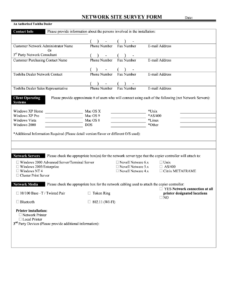An IT access control policy template is a set of rules and procedures that define the criteria for determining who has access to what information and resources within an organization. A well-defined policy template helps to ensure that access rights are granted appropriately and that sensitive information is protected from unauthorized disclosure, use, or modification.
The IT access control policy template should be designed to align with the organization’s overall security objectives and meet regulatory compliance requirements. It should also be regularly reviewed and updated to address changes in the organization’s business environment, technology infrastructure, and regulatory landscape.
Objectives of IT Access Control Policy Template
The primary objectives of an effective IT access control policy template include:
- Protecting the confidentiality, integrity, and availability of information and resources.
- Ensuring that access rights are granted appropriately and consistently.
- Preventing unauthorized access, use, or modification of sensitive information.
- Meeting regulatory compliance requirements.
- Enabling efficient and effective management of access rights.
By implementing a robust IT access control policy template, organizations can minimize the risk of security breaches, ensure compliance with regulatory requirements, and protect sensitive information from unauthorized access.
Key Components of IT Access Control Policy Template
The key components of an effective IT access control policy template typically include:
- Authorization: This section describes the process for determining who has access to what information and resources. It may include criteria such as job role, responsibilities, and level of clearance.
- Authentication: This section describes the process for verifying the identity of a user before granting access to information or resources. Common authentication methods include passwords, biometrics, and smart cards.
- Access Control: This section describes the specific mechanisms that are used to control access to information and resources. Common access control models include discretionary access control (DAC), mandatory access control (MAC), and role-based access control (RBAC).
- Auditing: This section describes the process for tracking and reviewing access to information and resources. Audit logs can be used to identify suspicious activity and detect security breaches.
- Review and Update: This section describes the process for regularly reviewing and updating the access control policy template to ensure that it remains aligned with the organization’s security objectives and regulatory compliance requirements.
By implementing a comprehensive IT access control policy template that incorporates these key components, organizations can effectively manage access to information and resources, protect sensitive data, and maintain compliance with regulatory requirements.
Conclusion
An IT access control policy template is a crucial component of an organization’s overall security strategy. By defining clear guidelines and procedures for granting access to information and resources, organizations can minimize the risk of security breaches, ensure compliance with regulatory requirements, and protect sensitive data. It is important to regularly review and update the policy template to ensure that it remains aligned with the organization’s evolving business environment, technology infrastructure, and regulatory landscape.
A well-defined and effectively implemented IT access control policy template can help organizations achieve their security objectives and maintain the confidentiality, integrity, and availability of their information and resources.
FAQ
Q1. What is the purpose of an IT access control policy template?
An IT access control policy template provides a standardized approach for determining who has access to what information and resources within an organization. It helps ensure that access rights are granted appropriately and consistently, protecting sensitive data from unauthorized access, use, or modification.
Q2. What are the key components of an IT access control policy template?
The key components of an IT access control policy template typically include authorization, authentication, access control, auditing, and review and update. These components work together to define the criteria for granting access, verify user identities, control access to resources, track and review access activities, and ensure the policy remains aligned with the organization’s security objectives and regulatory requirements.
Q3. How often should an IT access control policy template be reviewed and updated?
An IT access control policy template should be reviewed and updated regularly to ensure it remains effective and aligned with the organization’s evolving business environment, technology infrastructure, and regulatory landscape. The frequency of reviews may vary depending on the organization’s specific needs and requirements, but it is generally recommended to conduct reviews at least annually or more frequently if significant changes occur.
